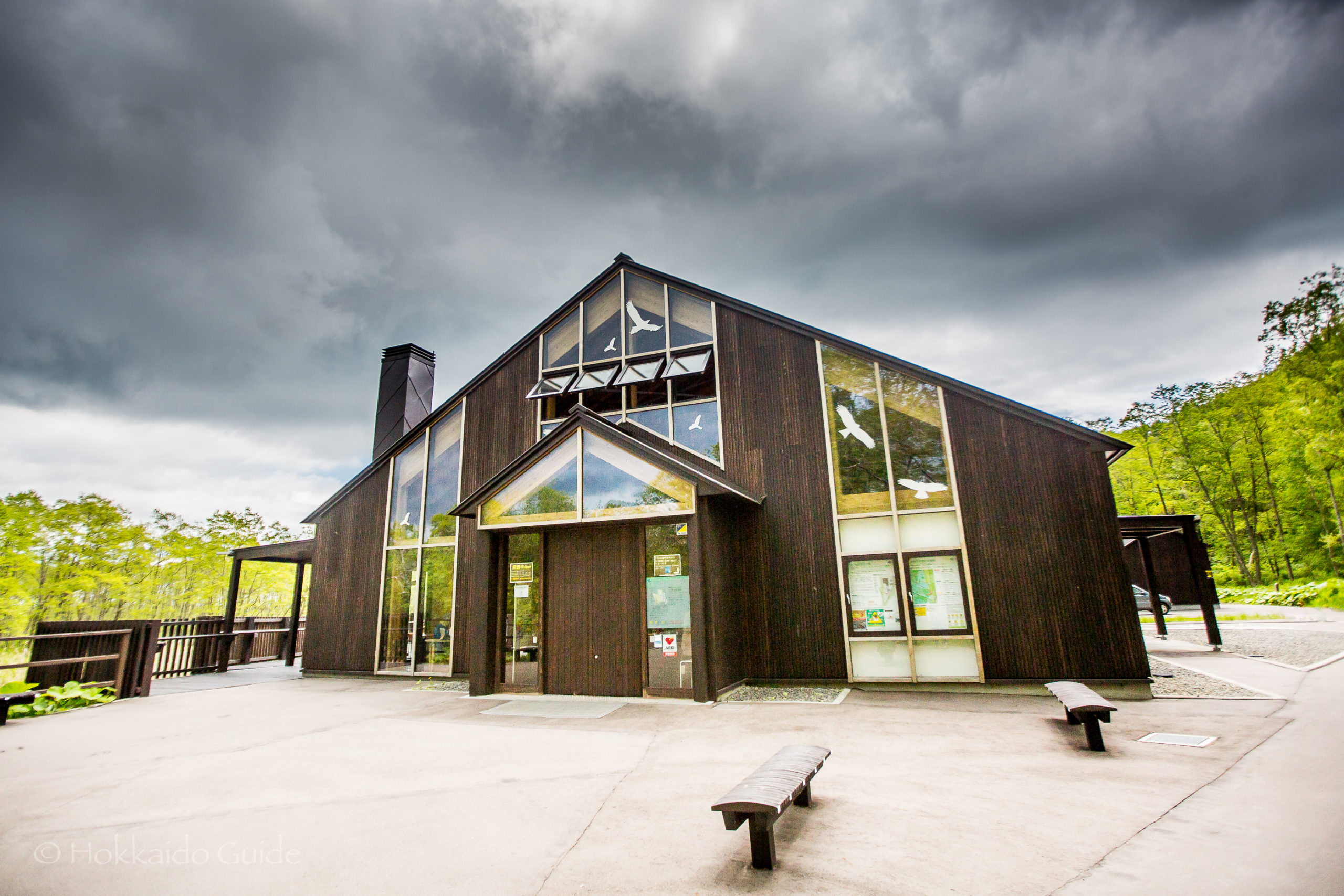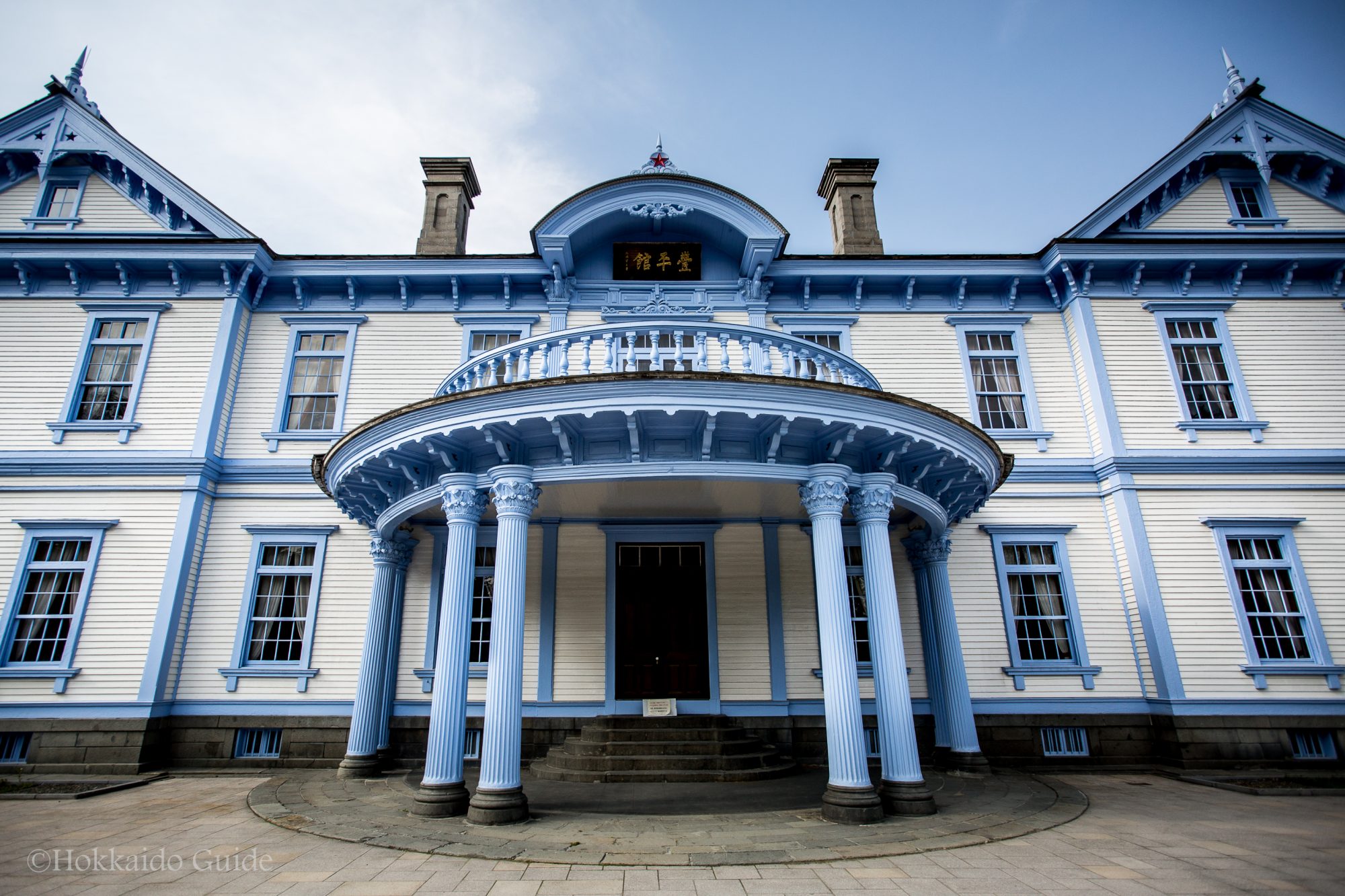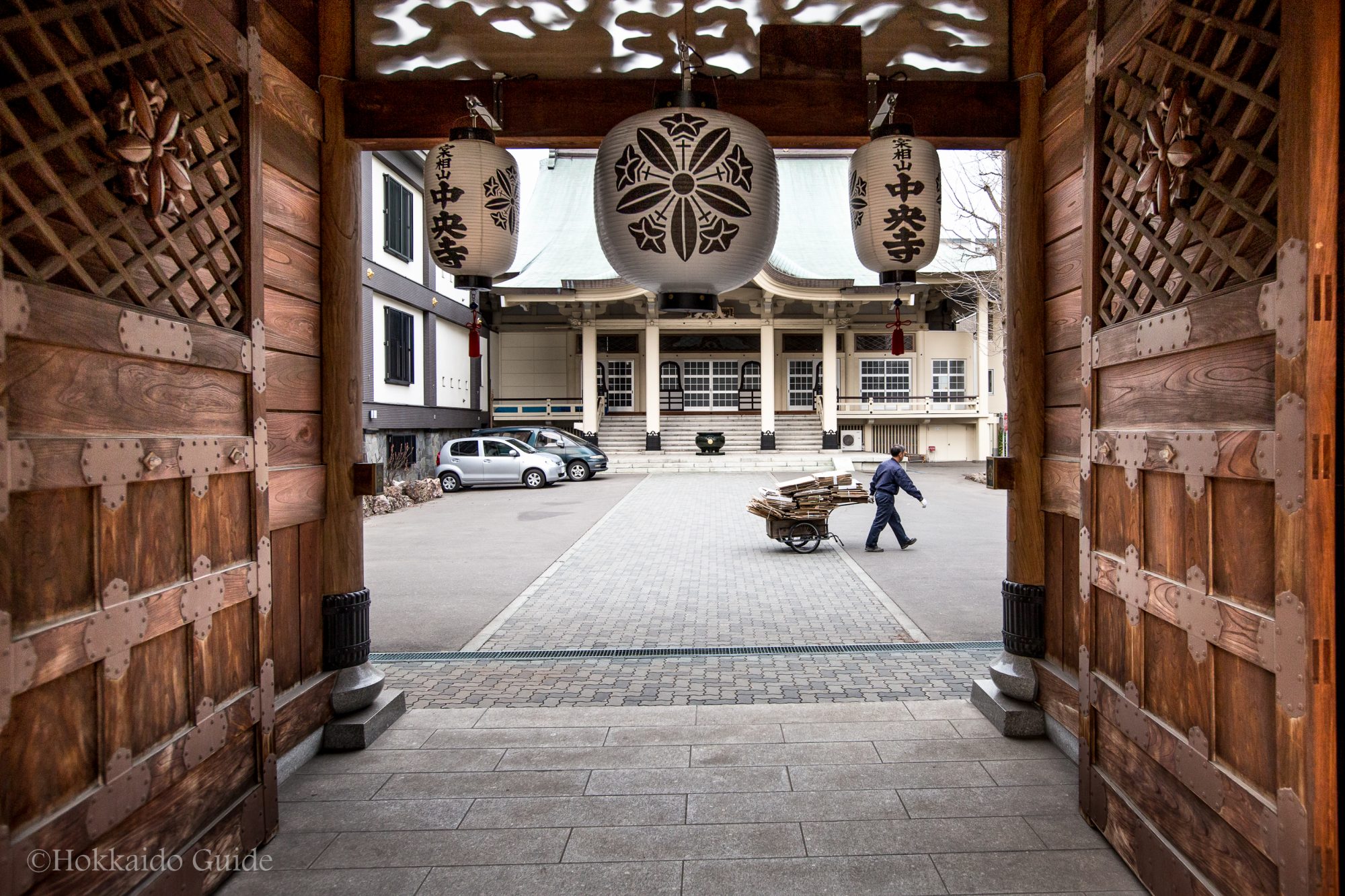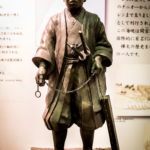
Category: Sightseeing
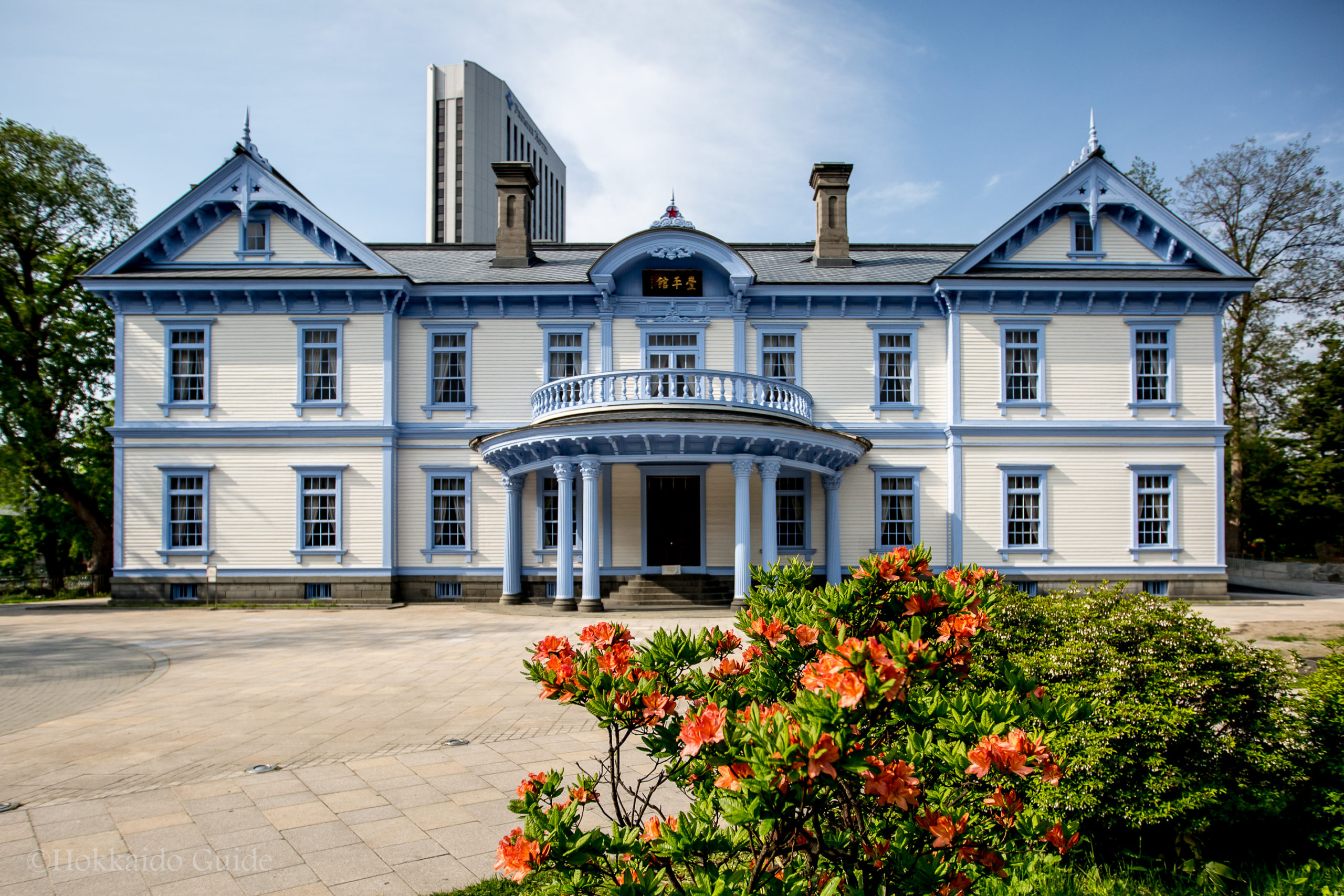
Hoheikan Building

| Admission | ¥300 per person ¥270 per person for groups of 20 people or more Free for junior high school students and younger |
| Opening Hours | 9am – 5pm (last admission at 4:30pm) |
| Closed | Every second Tuesday of the month (or the following day if Tuesday falls on a holiday) |
| Contact | 011-211-1951 |
| Notes | - |
| Location / Getting There | 9 Chome-2-20 Kita 7 Jōhigashi, Higashi-ku, Sapporo-shi, Hokkaidō 065-8518, Japan. Catch a bus from number four station near the north exit of Sapporo Station, or any Sapporo Beer Factory bus. |

Emperor Meiji
Hoheikan started construction in 1879 and opened in 1881. It is the only hotel built buy the Meiji government and was opened for Emperor Meiji’s visit to Sapporo where he stayed for 4 days. It is designated as an Important Cultural Property of Japan and is the oldest wooden hotel building in existence in Japan. It was originally located around Odori park but was relocated to Nakajima Park in 1958. It was opened as a civic exchange centre after its restoration in 1958. The whole building was constructed in the American style, but the balcony and its accompaniments at the front of the building was constructed in European style. Its architecture is representative of the early Meiji period and was built using traditional techniques.
[the_ad id=”4264″]
Hoheiken showcases a reproduction of the guest room where Emperor Meiji stayed on his visit to Sapporo and there is a video available in the building that shows a short piece on the history of Hoheikan. Hoheikan acts not only as a historical building but as a popular spot for wedding venues. There is a restaurant and cafe, housed in the building, and guests can enjoy snacks here. The restaurant serves Japanese and French cuisine, and uses ingredients harvested in Hokkaidō prefecture!
Click here for more information on Nakajima Park

Cherry Blossom Viewing

One of Japans oldest and most famous symbols is that of the cherry blossom (sakura). Such is the beauty of this national flower that the practice of “Hanami” (cherry blossom viewing) started over 1000 years ago. Under the sakura trees, people had lunch and drank sake in cheerful feasts. This tradition is as popular now as it was back then. BBQ’s, quiet picnics, lunches and of course, the consumption of beer and wine are very popular all over the country. In Japan, cherry blossoms symbolize clouds due to their nature of blooming en masse, and are said to be an enduring metaphor for the ephemeral nature of life.
[the_ad id=”4264″]
So! With that in mind, when and where is the best spot in Hokkaido to have a Hanami, get some good cherry blossom pics, or to simply walk around and enjoy the beauty of these flowers?
 First, the when. Hokkaido’s cherry blossoms come out in early May! Usually in the first or second week. Cherry blossoms are very fleeting, and the blooming is usually over within 2 weeks. Full bloom (mankai) is usually reached within about one week after the first blossoms (kaika) open. Another week later, the blooming peak is over and the blossoms are falling from the trees. Strong wind and rain can cut the blooming season even shorter. Hokkaido is the last place in Japan for cherry blossoms to bloom, as the warm weather travels north.
First, the when. Hokkaido’s cherry blossoms come out in early May! Usually in the first or second week. Cherry blossoms are very fleeting, and the blooming is usually over within 2 weeks. Full bloom (mankai) is usually reached within about one week after the first blossoms (kaika) open. Another week later, the blooming peak is over and the blossoms are falling from the trees. Strong wind and rain can cut the blooming season even shorter. Hokkaido is the last place in Japan for cherry blossoms to bloom, as the warm weather travels north.
Next, is the where! There are hundreds of great spots to see the cherry blossoms in Hokkaido, but these are our picks for the top ten spots in Hokkaido.
1) Matsumae Park
 Noted as one of Japans top sakura viewing spots, Matsumae is Hokkaido’s number one place for viewing cherry blossoms. Sitting at the bottom of Hokkaido it is a trek to get there. There are approximately 10,000 sakura trees. The Matsumae Sakura Festival is held here during the hanami season, usually from late-April to mid-May each year. In addition, The Matsumae Castle, Ryuunin Temple, Kozenji Temple, Sakura Museum, and Matsumae Shrine are a must see and all are inside the park grounds.
Noted as one of Japans top sakura viewing spots, Matsumae is Hokkaido’s number one place for viewing cherry blossoms. Sitting at the bottom of Hokkaido it is a trek to get there. There are approximately 10,000 sakura trees. The Matsumae Sakura Festival is held here during the hanami season, usually from late-April to mid-May each year. In addition, The Matsumae Castle, Ryuunin Temple, Kozenji Temple, Sakura Museum, and Matsumae Shrine are a must see and all are inside the park grounds.
2) Fort Goryokaku
 Located in Hakodate, Goryokaku is a star shaped fort and was built in the last years of the Edo Period. This beautiful public park is home to more than 1600 cherry trees. There is a 107 meter observation deck where you can enjoy a bird’s-eye view of the massive star-shaped fortress filled with tons of cherry blossoms, the Mt. Hakodate range, and the ocean in the distance.
Located in Hakodate, Goryokaku is a star shaped fort and was built in the last years of the Edo Period. This beautiful public park is home to more than 1600 cherry trees. There is a 107 meter observation deck where you can enjoy a bird’s-eye view of the massive star-shaped fortress filled with tons of cherry blossoms, the Mt. Hakodate range, and the ocean in the distance.
3) Hakodate Park
Also in Hakodate this park is a popular spot for cherry blossom viewing and especially for Hanami – picnics and BBQ’s under the sakura trees. In this park there are street food stalls, a fountain, children’s playground and a mini zoo. What makes this spot unique is that it is set up for Yozakura which is night time viewing!
4) Shizunai Nijukken Road
 Nijukken Road in Shizunai is also said to be on the list of Japan’s top 100 hanami spots. The road is very straight, about 7 kilometers long and 36 meters wide, and is lined with approximately 3,000 sakura trees. It is said to be the longest row of cherry trees in Japan and offers you an amazing tunnel of cherry blossoms so a car is needed. There are places to stop and walk along the path and get some great photos! The best time to see sakura here is from early May to mid May. Also home to the Shizunai Sakura Festival. For more information look at our article on Shizunai Cherry Blossom Festival.
Nijukken Road in Shizunai is also said to be on the list of Japan’s top 100 hanami spots. The road is very straight, about 7 kilometers long and 36 meters wide, and is lined with approximately 3,000 sakura trees. It is said to be the longest row of cherry trees in Japan and offers you an amazing tunnel of cherry blossoms so a car is needed. There are places to stop and walk along the path and get some great photos! The best time to see sakura here is from early May to mid May. Also home to the Shizunai Sakura Festival. For more information look at our article on Shizunai Cherry Blossom Festival.
5) Nakajima Park

Perfect spot for a picnic
Nakajima Park has been listed as one of “100 most popular urban parks in Japan.” Like other planned Japanese gardens, Nakajima Park changes with seasons. Definitely a great place to take a stroll. The park highlights both early and late blooming cherry trees of different kinds. Where as Maruyama park has tonnes of BBQ’s going on, and lots to do, Nakajima park is a lot more tranquil, due to its bigger area. Nakajima park is more suited to a quiet picnic under the trees.
6) Moerenuma Park
 Designed and built by Japanese American sculptor Isamu Noguchi, this park took 7 years to complete. There are many things to see at this park but for cherry blossoms there is a whole section called the ‘Sakura no Mori’ or ‘Forest of Cherry Trees’. It has about 2300 sakura trees of different kinds. There are also huge grass areas where you can have a picnic and unwind. Great spot for walking around!
Designed and built by Japanese American sculptor Isamu Noguchi, this park took 7 years to complete. There are many things to see at this park but for cherry blossoms there is a whole section called the ‘Sakura no Mori’ or ‘Forest of Cherry Trees’. It has about 2300 sakura trees of different kinds. There are also huge grass areas where you can have a picnic and unwind. Great spot for walking around!
7) Maruyama Park

Cherry blossom season
Maruyama park is located in Sapporo and is easy to get to! Probably, the top place for hanami in Sapporo. There are lots of stalls, and lots of BBQ’s and picnics going on during this time! Maruyama park is also home to Hokkaido Shrine. The path to the shrine is lined with sakura trees so it makes for a breathtaking sight as you look down to and from the shrine. Maruyama also has plum blossoms on the grounds. Though not as stunning as the sakura trees, these stay in bloom much longer and are still worth a look!
8) Asahiyama Park

Shrine among the cherry blossoms
Asahikawa is famous for its ramen (chinese noodles) and Asahiyama zoo, which is the biggest in Hokkaido. It also can lay claim to having a fantastic park to view cherry blossoms, so coming in at no. 8 is Asahiyama park in the central city of Asahikawa. This park is an excellent spot for parties, picnics and enjoying the atmosphere to the fullest. The cherry trees here are also lit up at night so yozakura (sakura night viewing) is also on the menu! This park is home to more than 3000 wild sakura trees.
9) Noboribetsu Onsen Sakura Tunnel
Noboribetsu Onsen is said to be the most famous hot spring resort in Hokkaido. The road leading from the JR Noboribetsu Station to Noboribetsu Onsen is lined with about 2000 Ezo Yamazakura cherry trees. It’s a fantastic road to cruise along in your car or motorbike, breath in the mountain air and enjoy the cherry blossom tunnel! Mid May is said to be the best time to see these cherry blossoms!
10) Seiryuji Temple
Last and coming in at no.10 you will have to travel east, far east to the city of Nemuro. Situated on the eastern most point of Hokkaido the sakura trees are located on the grounds of the Seiryuji Temple. The trees are Chishima-zakura cherry trees and they feature one of the oldest cherry blossom trees, which is 150 years old! These are known as the ‘Trees of Nemuro’. Because Nemuro is one of the last places for the cherry blossom trees to bloom, it is best to go around mid May.

Chuo Temple (Chuo-ji)
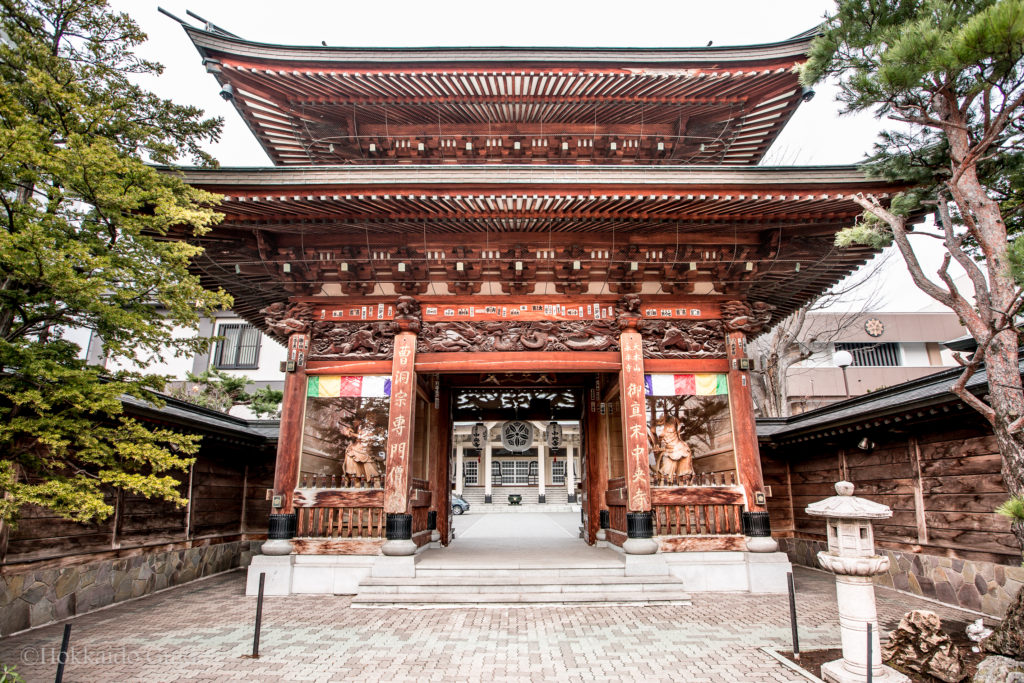

Ungyō
Chuo-ji is a Buddhist Temple located in downtown Sapporo, in Susukino (the entertainment district). It is not a big temple in regards to temples in Japan but its a good temple to go and check out and experience a little of the Japanese culture. The entrance is framed by a two story gate. The gate, as typical with most Buddhist temples, is guarded by the Nio or Kongōrikishi. These two muscle bound guardians are carved from wood and according to Japanese tradition, travelled with Gautama Buddha to protect him. These two characters, named Agyō and Ungyō, together symbolize the birth and death of all things. The entrance is a nice spot to take some photos.
[the_ad id=”4264″]
Chuo-ji practises ‘zazen’. Zen is the belief that every human being is born with clear minds and the capacity to live in an open-minded way. Chuo-ji is free to enter but they do offer Zen classes for a fee of ¥500 which is held in the Temple Zazen Hall. This is held on Sundays and they offer this course in English! The program is 3 hours and runs until midday, so why not try something new AND relaxing!
| 8:20 am | Zazen instruction (for newcomers) |
| 9:00 am | Zazen begins |
| 9:30 am | Kinhin (walking meditation) |
| 9:35 am | Teisho (dharma talk) 2nd zazen session |
| 10:05 am | Kinhin (walking meditation) |
| 10:10 am | Fukanzazengi chant |
| 10:20 am | Zazen Hall cleaning period |
| 11:10 am | Tea and discussion |
| 11:50 am | Zazenkai ends |
- Agyō
- Welcome!
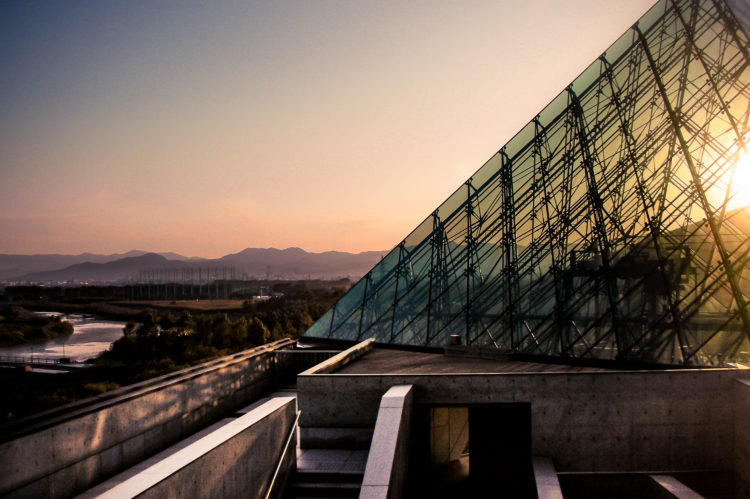
Moerenuma Park
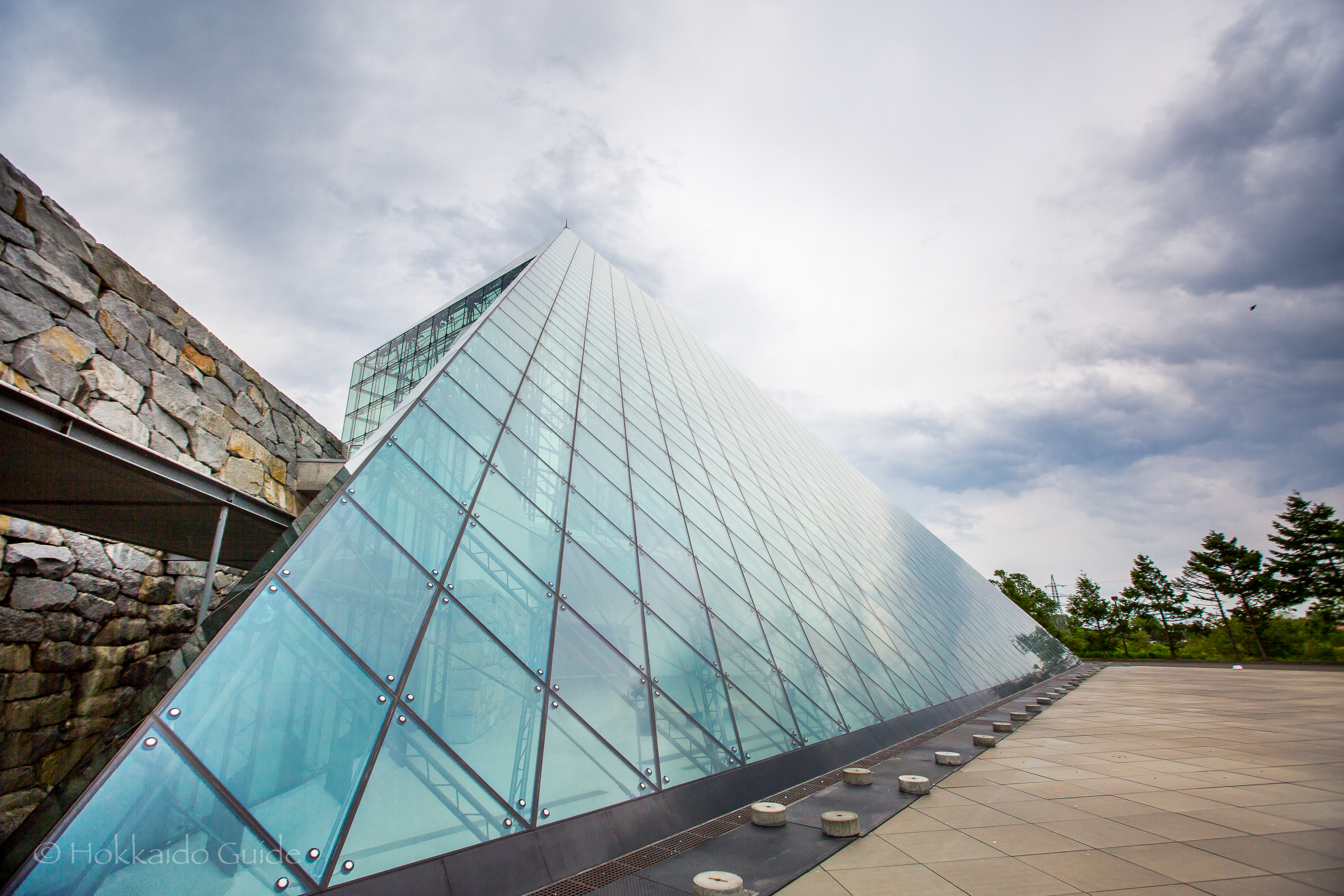
| Admission | Free admission |
| Opening Hours | 7:00 - 22:00 |
| Closed | - |
| Contact | 011-790-1231 |
| Notes | Parking available, Bicycles for hire, French restaurant in pyramid, Art gallery, Photography spot, Kids play area, Picnic spot, Water park, Wheelchair access |
| Location / Getting There | Take bus from Sapporo. Details see below. 1 Moerenumakōen, Higashi-ku, Sapporo-shi, Hokkaidō 007-0011, Japan |
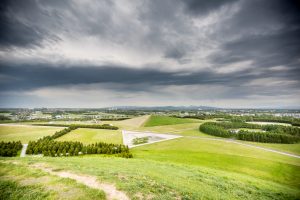
View of the park from the hill
This magnificent park design is owed to the master planning by Isamu Noguchi (1904-1988) , a Japanese-American artist, sculptor and landscape architect. Construction started in 1982 and was completed in 2005. It was built over a vast waste treatment plant and covers a huge 1.89 square kilometers. Sculptor Isamu Noguchi created the basic design based on the concept of “the whole, being a single sculpture”. The park is a must see and fuses together contemporary design with nature.
[the_ad id=”4264″]

Good photography spot
The park contains many sculptures and has many features throughout. Its a great place to visit with family, with friends or for a date out. Cherry blossoms bloom in the spring, and the fountain and wading pool facilities are open in the summer. The Autumn brings out the beautiful changing colors , and there is cross-country skiing and sledding across the snow-covered landscape during winter. The park has attractions for all seasons. Rental bicycles are available from late April to early November for 100 yen per hour.
| Access From JR Sapporo Station | |
| 1. | Take the subway Toho Line (blue line) to Kanjo dori higashi station (25-min. ride) From Kanjo dori higashi station take the Chuo Bus [higashi 69] to Ainosato kyoikudai eki. Get off at “Moerenuma koen higashiguchi (east entrance) or From Kanjo dori higashi station take the Chuo Bus [higashi 79] to Nakanuma Shogakko dori, get off at “Moerenuma koen higashiguchi (east entrance) |
| 2. | From subway Namboku Line (green line) to Kita sanjuyo jo Toho line “Shindo higashi” (30min. / 20min. ride) Chuo Bus [Higashi 76] to “Shogakko dori”, get off at “Moerenuma koen Nishiguchi (west entrance)* |
| 3. | The seasonal bus service to Moerenuma Park in the summer runs to all parts of the city, including “Bus Center”, “Asabu”, and others. |
| *The west entrance (Nishiguchi) is closed during snowfall. | |
PARK FEATURES:
HIDAMARI

From the rooftop of the pyrmaid
One of the main structures and the symbol of the park is the glass-walled pyramid. This beautiful building serves as an art gallery. Exhibitions are held throughout the year by prominent artists. Prices vary on the exhibition. The Hidamari Pyramid also contains a delicious French restaurant, a gift shop, an ice cream shop and small take out lunch shop, plus an information center and has a viewing platform overlooking the park and the outlying areas. The viewing platform at the top of the pyramid is open from 9:00 until 20:00 during summer, 19:00 in Spring and Autumn, and until 17:00 during the winter months. It’s a good idea to check out this platform first, so you can plan out what areas you want to see in the park!
- Inside the structure
- Beautiful design
- View from the 3rd floor
- Art gallery space
- Take out coffee
- Food store
- Lunch box set
- Gift shop
MOUNT MOERE

Long walk up
Standing at 62 meters this man made mountain offers the best view of Moerenuma Park and the surrounding areas. There is a long winding track up, or a long flight of stairs straight to the stop. So if you’re also into fitness it’s a good work out! In winter, visitors can enjoy sledding and skiing on the mountain, making this feature one of the main attractions for visiting the park in winter. From this hill you can see all the way to Sapporo, and out over Hidamari. It is a good spot to get some photos!
MOERE BEACH
There is a shallow water park open from June to mid September. The paved pond is only a couple of feet deep which is great for young kids to play and splash around in. There are 3 water fountains in the pond as well so its also a popular area in the heat of summer. Ample grass space surrounding the pond is used for setting up tables and tents.
Open: Jun.13 – Sep.2. 10:00-16:00
Closed: Every Thursday
SEA FOUNTAIN
Surrounded in a copse in the middle of the park is the ‘Sea fountain’ which has a showtime at various times during the day. The giant fountain shoots up to 23 metres and was created to show the ebb and flow of life. At night the show is illuminated in time with the water.
| Operating Period April 29 - October 20 |
| Timetable for Weekends and National Holidays April 29 - May 31 10:30 - 10:45, 13:15 - 13:55, 16:00 - 16:15, 18:30 - 18:45* |
| June 1 - August 31 10:30 - 10:45, 13:15 - 13:55, 16:00 - 16:15, 19:15 - 19:55* |
| September 1 - October 20 10:30 - 10:45, 13:15 - 13:55, 16:00 - 16:15, 18:30 - 18:45* |
| Weekdays 10:35 - 10:45, 13:15 - 13:55, 16:00 - 16:15* |
| *Service may stop or the timetable may be shortened due to weather conditions, such as winds or heavy rain. |
FOREST OF CHERRY TREES
There is a large forest area interwoven with paths and play equipment which is great for the kids. The play equipment was also designed by Isamu Noguchi and really captures the imagination. These equipment pieces also serve as sculptures in their own right. There are 7 of these pieces hidden throughout this wooded area and not only are they fun to play on but its also fun to walk around and find whats around the corner.
TETRA MOUND
The Tetra mound is a triangular pyramid which is 13 meters in height. It is composed of stainless steel columns, two meters in diameter, and mounted on a grassy mound. The stainless steel surface was completed to resemble Isamu Noguchi’s fountain works in Detroit.
AQUA PLAZA
During Sapporo’s hot summers the Aqua Plaza offers a nice place to cool off. The 150 meter shallow canal flows through a section of the park. The water springs forth from a large sculptural basin. The stream is a great place to walk along, in or sit down and dangle your feet in the water. Isamu Noguchi’s water piece, garden area and stone square surrounded by two large mountains is often viewed as the symbolism of Sapporo.
- Good photography spot
- Relaxing
- Local Wildlife
- One of the structures

Sapporo Clock Tower (Tokeidai)

Clock Tower
| Admission | Adults ¥200 |
| Opening Hours | 9:00 to 17:00 Daily |
| Closed | January 1st to January 3rd |
| Contact | 011-231-0838 |
| Notes | - |
| Location / Getting There | Japan, 〒060-0001 Hokkaidō, Sapporo-shi, Chūō-ku, Kita 1 Jōnishi, 2 Chome 札幌市時計台 |
Located in the center of Sapporo just by Odori park, the clock tower was constructed in 1878. Sapporo was developed in the late 1860’s which makes the clock tower the oldest remaining structure in the city. The idea for the tower came from Dr. John Clark who was the vice principal of the Sapporo School of Agriculture at that time. The tower is American designed and served originally as a drill hall for students to do their physical education and military training. It also served as a hall for ceremonies.
[the_ad id=”4264″]
The clock tower now serves as a museum housing exhibits, photos and information on the history of agriculture in Sapporo and the development of Sapporo. Although dwarfed by the some of the surrounding modern buildings, the clock tower serves as one of Sapporo’s most famous icons. For foreign and domestic tourists, the tower is a hugely popular building. There is a constant stream of people taking the opportunity to visit and photograph this much loved piece of history.
In 1970, Sapporo Clock Tower was designated an ‘Important Cultural Property’ and certified as ‘Mechanical Engineering Heritage’ of Japan in 2009.

Former Hokkaido Government Office
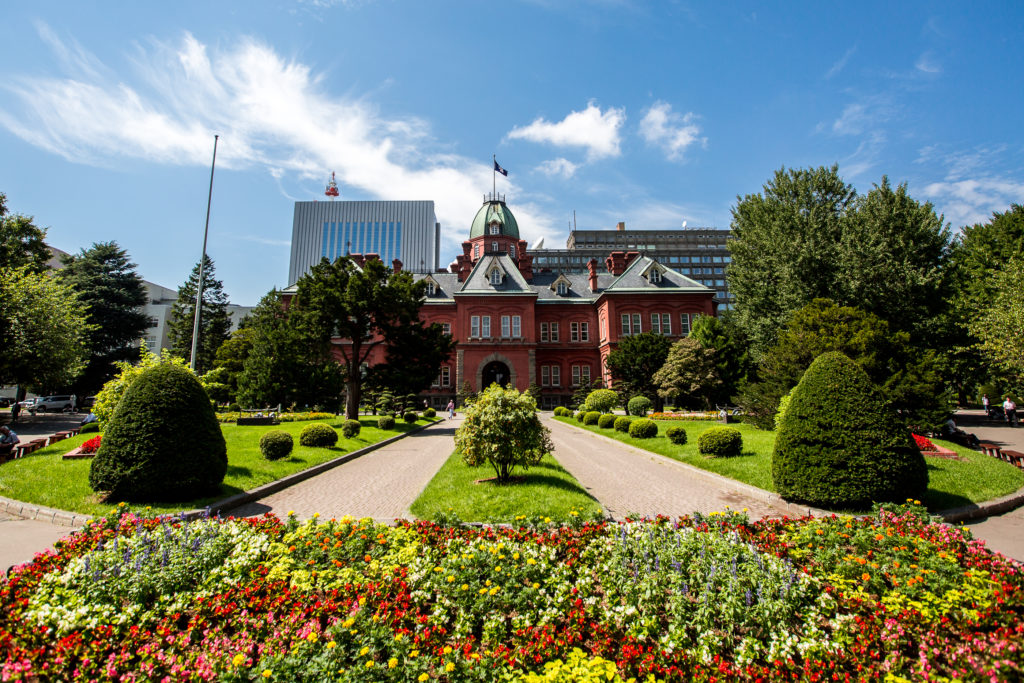
| Admission | Free |
| Opening Hours | 9 am to 5 pm daily |
| Closed | 29th December to 3rd January |
| Contact | 011-204-5019 |
| Notes | - |
| Getting There | 6 Chome-1 Kita 2 Jōnishi, Chūō-ku, Sapporo-shi, Hokkaidō 060-0002, Japan |
Also known as the ‘Red Brick Building’, the Former Hokkaido Government Office was used for approximately 80 years until the new government office currently in use was built. Built in in 1888, it now serves as a museum presenting exhibits about Hokkaido’s history. Built in French style architecture, the 33m-tall and 61m-wide Old Hokkaido Government Building was one of the tallest and largest buildings in Japan but had to be rebuilt in 1911 after a fire destroyed much of the interior.
[the_ad id=”4264″]
The exhibits are located on the 1st and 2nd floors. The information panels are all in Japanese but there are folders located that are translated into various languages such as English, Chinese, and Thai. They show information on the history of Sapporo, with models, photos and items from that era.
 Throughout the building there are 20 paintings inside, which depict historically important scenes in the history of Hokkaido. The paintings are hung in the corridors and exhibition rooms. Most of the windows are double-paned, to keep out the freezing climate of Sapporo. A souvenir shop is also located on the 2nd floor.
Throughout the building there are 20 paintings inside, which depict historically important scenes in the history of Hokkaido. The paintings are hung in the corridors and exhibition rooms. Most of the windows are double-paned, to keep out the freezing climate of Sapporo. A souvenir shop is also located on the 2nd floor.
The three-section arch, which is decorated with engravings in Western architecture, is installed in the entrance hall. This is a popular spot for tourists to take photos. The Governor’s former office room is open to the public, and it displays restored room facilities as well as pictures of the successive governors in Hokkaidō. Other rooms are occasionally designated as conference rooms, and many companies and organizations have used these rooms for their meetings.






